Everything You Need to Know
About Composite Decking
Maintenance
Expert tips, tools, and FAQs to keep your outdoor space looking brand new.
- July 23 2025
- Allan Jeffrey
- 75 mins read
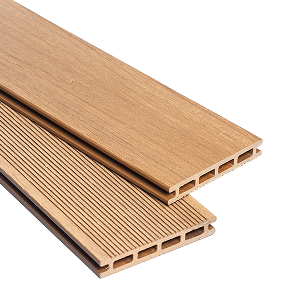
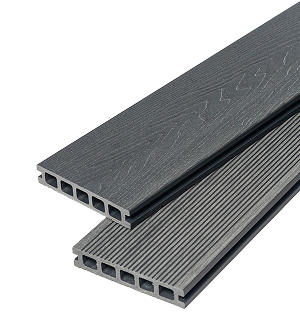
So, you’ve either just installed your new composite decking or you’re doing a bit of research into what it takes to look after it. We understand that keeping your deck in top condition is a priority. That’s why we’ve poured our years of hands-on experience and customer feedback into this ultimate guide.
We’ll cover everything from crucial post-installation checks and the best cleaning techniques, to insider tips for removing stubborn stains and a clear list of which household products to avoid. Most importantly, we’ll explain how the specific type of decking you own determines the care it needs.
We’ve packed a lot of practical advice into this guide, so to help you get straight to what you need, use the “Jump To” menu below. We’ve also included helpful videos in each section—perfect if you prefer a visual guide!
First, let’s identify which type and generation of composite decking you have. This is key because it determines how much cleaning is needed and what products you should use.
This is the classic and most common type of composite decking sold in the U.K. The top surface is produced using reclaimed wood fibres. Why does this matter? Well, with anything that has wood in its structure, regular cleaning is essential to stop the build-up of algae, mould, and mildew.
Yes, first-generation composite decking can get mould and mildew if dirt, debris, and water are left on the surface for long periods. If this has already happened to your deck, don’t worry! Just jump to our deep clean section to see our tips on how to remove it.
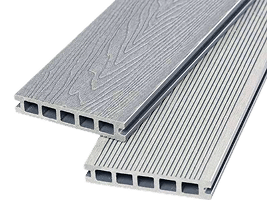
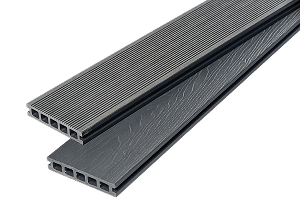
Also known as capped, shielded, or protected boards, this type is the ultimate high-performance, low-maintenance option. As we’ve mentioned across this website, these boards are manufactured with a thin plastic layer that covers the entire board, acting as a protective shield.
This shield increases resistance to moisture, which is key when it comes to cleaning. Since the boards resist moisture, they aren’t a breeding ground for mould and mildew, although they can still get a build-up of algae. They are also more resistant to staining. Therefore, regular cleaning is all that’s required to prolong the enhanced appearance of your composite decking
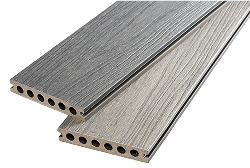
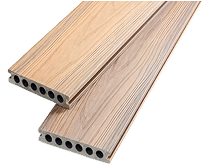

It makes sense to start with maintenance, right? If you’re searching for advice or have just purchased your decking, following some of the tips we’ve learned over the years can decrease the level of cleaning required during the product’s service life. Let’s take a look.
Once your composite decking is installed, we recommend checking the following key points:
| Check the gradient | Check gaps | Check the flex |
|---|---|---|
| There should be no water pooling on your deck. Pour a bucket of water or use a garden hose to test it. All water should run off smoothly. If any water sits on the surface, discuss this with your fitter or re-check your installation guide | Checking the gaps is essential for drainage and expansion. Go around your deck and confirm that the end-to-end gap is 6mm and the side-to-side gap is 3mm. If the gaps are incorrect, contact your fitter immediately. | Walk across the entire decking and check for any noticeable flex or bounce. This is a clear sign that the joist centres are not at the recommended 300mm and needs to be investigated urgently. |
Once these checks are complete, what else should you know to reduce the amount of cleaning required and keep your deck looking its best?

Despite the fact composite decking has resistant qualities to mould and mildew due to its composition, which ensures a reduction in moisture absorption; composite boards can still experience growth of mould and mildew when the accumulation of leaves and debris build up on the boards. When debris, such as leaves, fall onto the deck and pile up, this creates a barrier on the deck surface, which traps the moisture and heat in an insulating layer. Mould and bacteria thrive within these conditions and, in turn, are more likely to grow when left on your decking.
Therefore, the location of your decking is important to consider in the maintenance of your composite decking. For example, if you place your decking under trees and bushes, you will need to clean your decking more regularly. Mould is not only an eyesore but will also damage and weaken your composite boards, which can lead to the costly and time-consuming process of having to replace or reinstall boards.
As stated above, regular checking of the condition of your decking boards is important, as mould can spread and ultimately damage multiple boards if left untreated. In most cases, mould and mildew can be simply cleaned with hot soapy water and a soft bristle brush. For tougher stains, you can attempt to use a vinegar and baking soda solution, resorting to stronger products such as Compo Clean if all else fails.
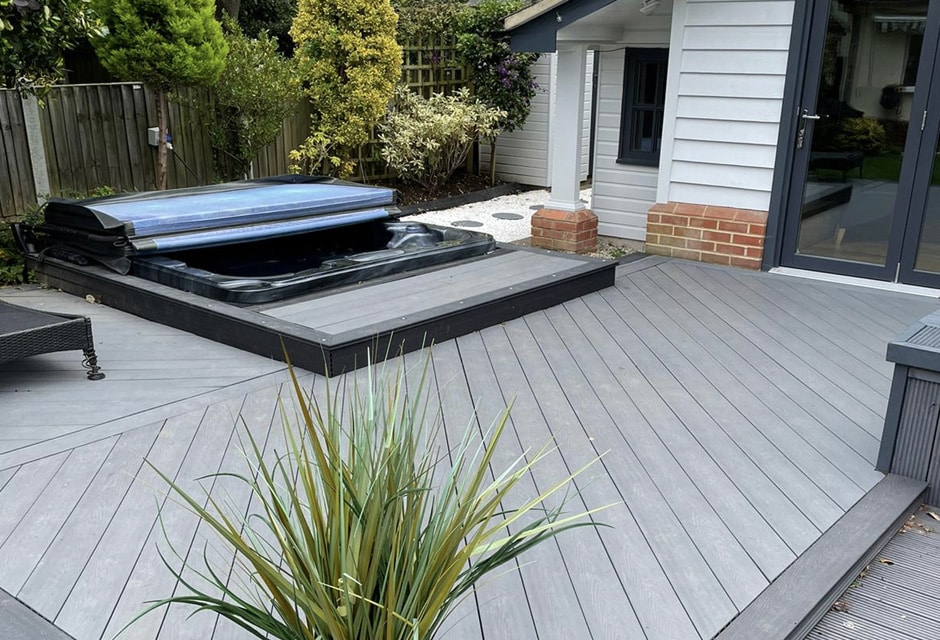
Composite decking is a water-resistant material, but this does not mean it won’t absorb moisture if fully submerged in water. Composite decking repels more water than wood but is not completely waterproof. To properly care for your composite decking, avoid any build up of water on the deck surface and ensure water drains off the deck easily.
Pro tip: Run a bucket of water or a hose along your deck to test the drainage. All water should run off smoothly.
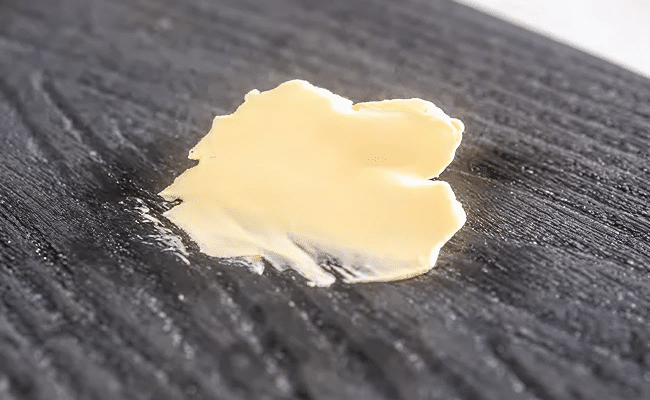
Most homeowners use their decking as an outdoor eating area, especially in the summer months. Food particles on your deck surface can make it look less attractive and cause staining. It can even cause stains and the growth of mould to grow on your deck. Whenever you have your meal on your deck, ensure you don’t leave food scraps on the deck. Check around and clean away any food scraps to prevent mould growth.
Pro tip: A quick wash with hot, soapy water immediately after any spills or grease drops will ensure your deck stays looking its best.

When there are scratches on your decking, it can distort the decking’s appearance. Scratches can also be difficult to fix on composite decking. Although composite decking is a quality material, it is still prone to scratches. Avoid dragging items such as furniture and BBQs over your decking or placing objects with sharp edges on your composite decking in order to protect the decking surface.
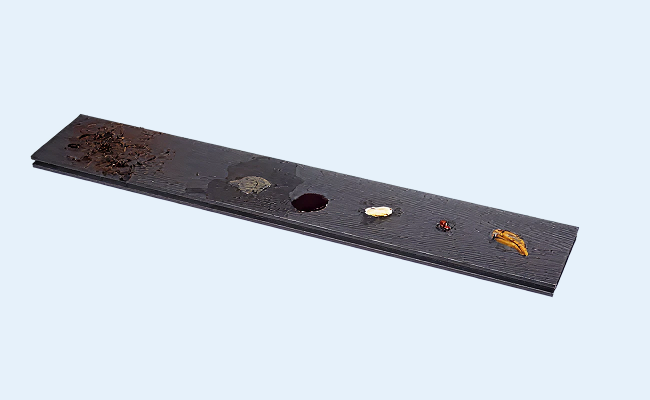
Another composite decking maintenance tip is to remove stains on the decking surface. Homeowners using their decking as a cooking and dining area should always check for grease stains. If you notice an oil or grease stain on the decking surface, clean it immediately. Remove the grease stain with vinegar and baking soda. Use the baking soda and vinegar mixture to gently scrub the affected area with a decking brush.
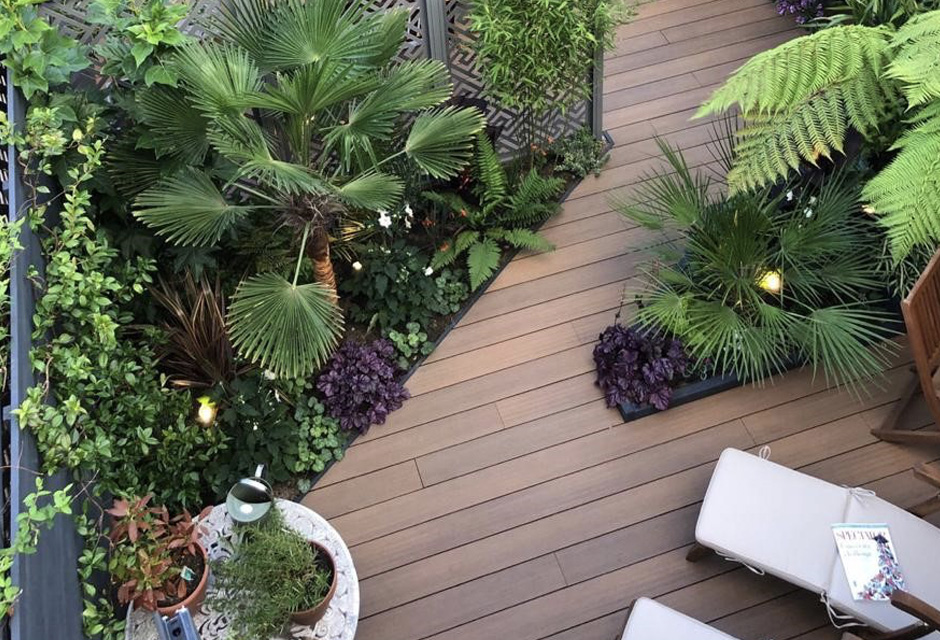
A build-up of dead leaves and twigs on your composite decking traps moisture leading to mould and bacteria growth on the composite boards. It is important to remove leaves and twigs to avoid this from occurring, as mould can stain and damage your decking.
Pro tip: A simple sweep with a soft-bristled brush is the easiest way to remove dry leaves. For wet, stubborn leaves, hose the area down first to make them easier to brush away.
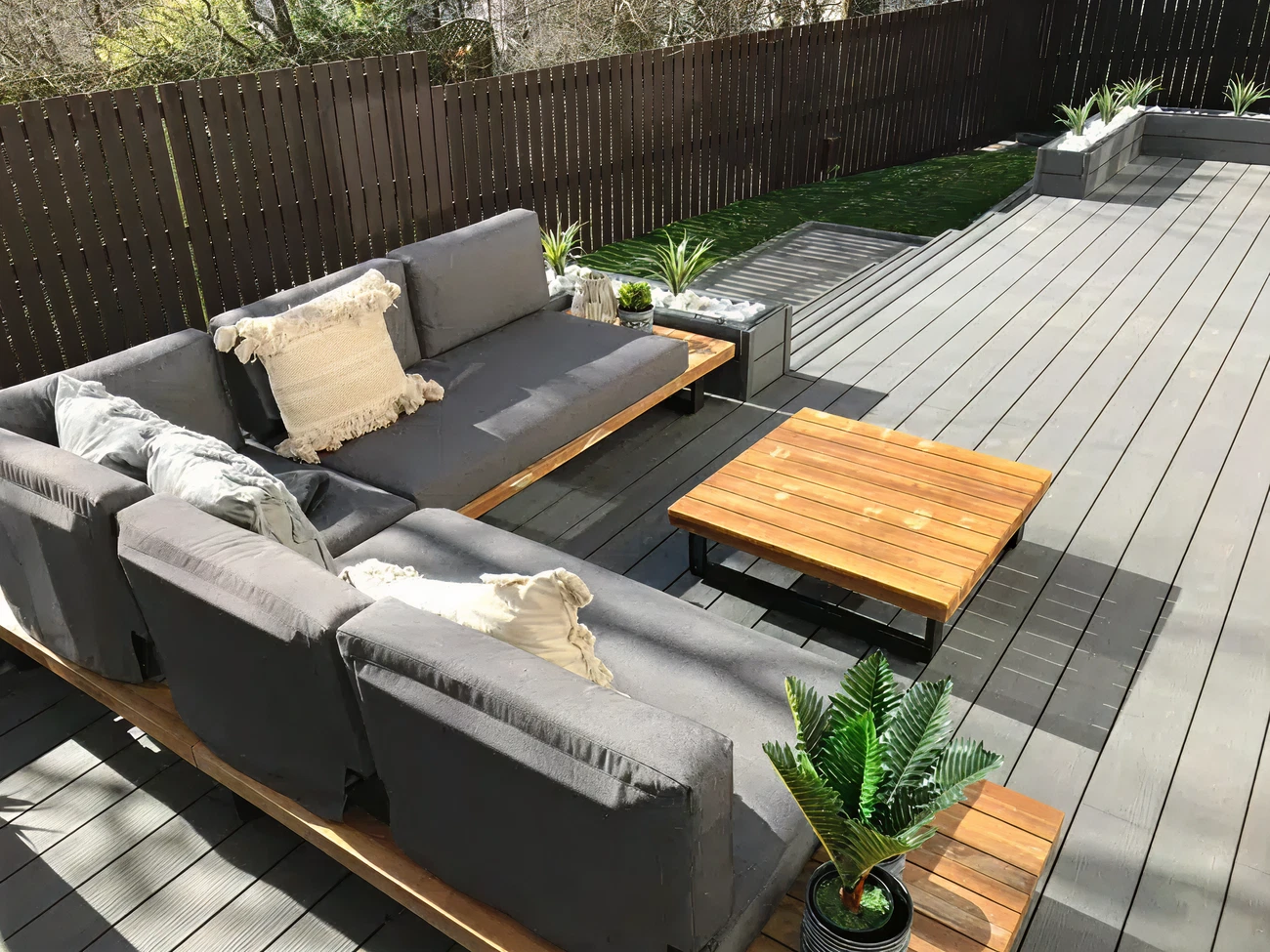
When mould or tough stains appear, many homeowners are tempted to use bleach. Based on our experience, this is one of the most damaging things you can do to your deck. Chlorine bleach is far too harsh for composite materials and will cause significant problems.
Firstly, it will permanently fade and strip the colour from your boards. Secondly, it is corrosive to the metal clips and fasteners holding your deck together, which can compromise the structural integrity of the entire deck over time. Finally, bleach is surprisingly ineffective at killing mould on porous surfaces like composite decking, meaning the problem will likely return.
For a safe and effective clean, stick to a simple solution of ammonia-free washing-up liquid and water. For more stubborn stains, the targeted use of vinegar and baking soda is the correct approach.
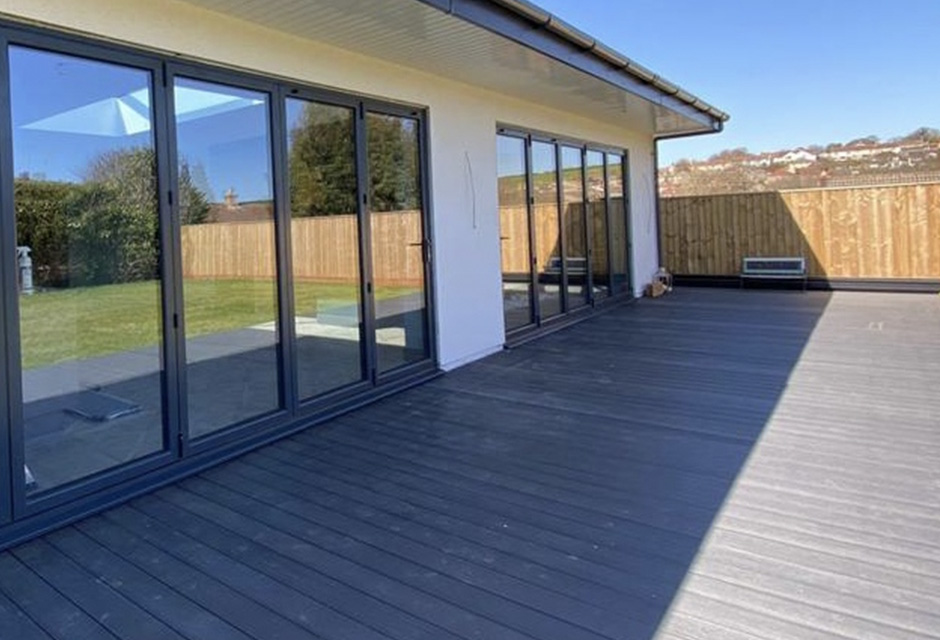
Placing a hot object on decking can distort its appearance. If you plan to use your decking area as a kitchen, avoid placing hot objects directly on the deck’s surface. Grills and BBQs can damage or create dents on the decking surface. Remember that composite decking differs from wood, as it is made from recycled plastic and wood fibres. Hot objects placed directly on the surface will distort or dent your decking.
Please Note: Outdoor rugs are a great way to protect high-traffic areas and ensure hot objects don’t sit directly on your deck’s surface.
Ideally, you will not have to fix any markings from your decking surface if you prevent them from occurring in the first place. You can protect your decking from marks by using rugs or mats. Placing them on areas of your decking that experience the highest footfall can prevent scuff marks from shoes and high heels. Choosing lightweight furniture will also help to prevent scuff marks on your decking. Use rubber furniture pads on the legs of your furniture to protect the deck surface.
Now that we understand the differences between board types, let’s look at the basic, regular cleaning needed to keep your composite decking looking its best.
Remove all furniture and other items from the surface.
Fill a bucket with lukewarm water and add a few squirts of ammonia-free washing-up liquid.
Take a soft brush (we recommend one you would use to clean a car), dip it in the bucket of hot soapy water, and simply scrub the deck clean.
Give the deck a good scrub, going over any tougher areas multiple times.
Once you’re happy, simply hose it down. You can use a power washer on a spray setting, but do not get too close or use high pressure.
Remember, with a pressure washer, do not get too close (hold it at least 12 inches away) and do not use a high-pressure setting.
If you do this regularly (around once a month), you likely won’t need a deep clean.
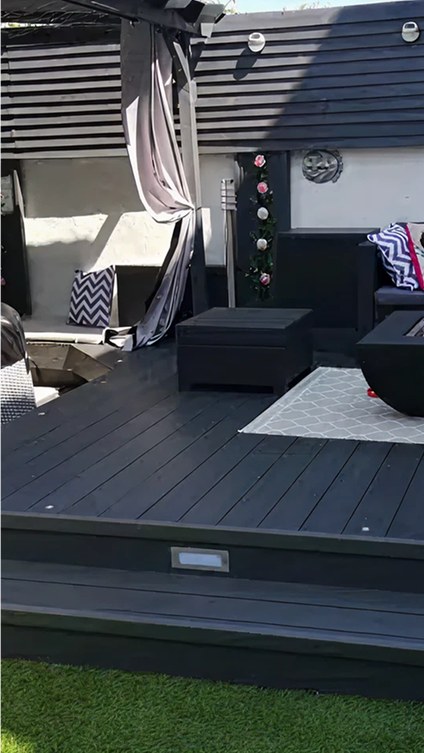
If you have left your deck for some time without regular monthly cleaning, it will likely have built-up marks, dirt, and debris. Much like a car that is only cleaned once or twice a year, the process will be longer. However, in most cases, the deck can still be brought back to its best by following the steps above.
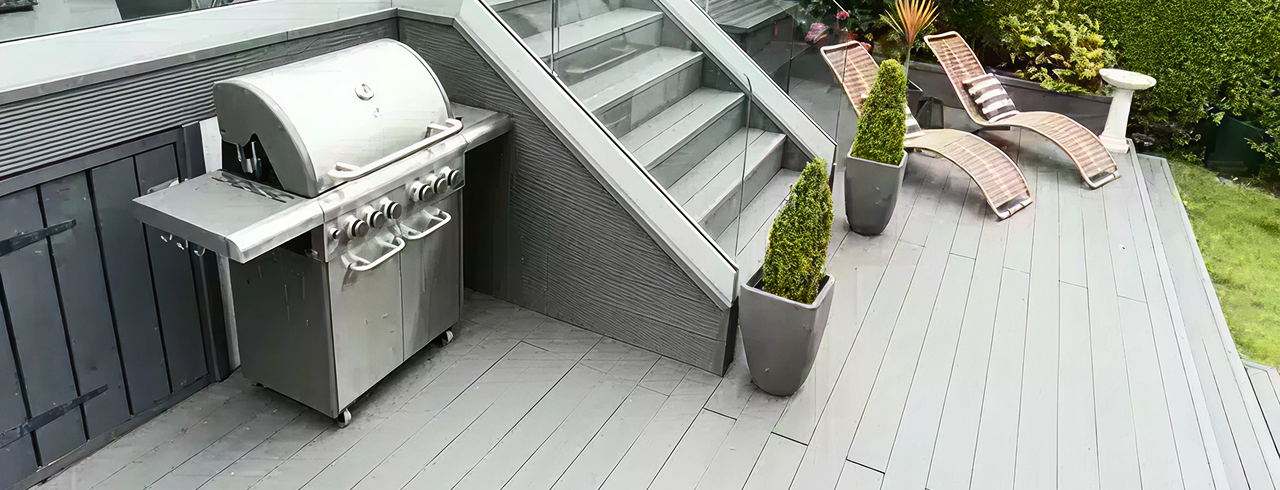
In summary, proper care for your composite decking comes down to three key principles: performing crucial post-installation checks, committing to simple and regular cleaning (ideally once a month), and using targeted methods for any tough stains. Our years of experience have shown that this preventative approach is the easiest way to ensure a long and enhanced life span for your decking. Of course, the best way to guarantee low maintenance is to start with high-quality materials. If you’re planning a new project or considering an upgrade, explore our range of second-generation composite decking to find the perfect fit for your home.
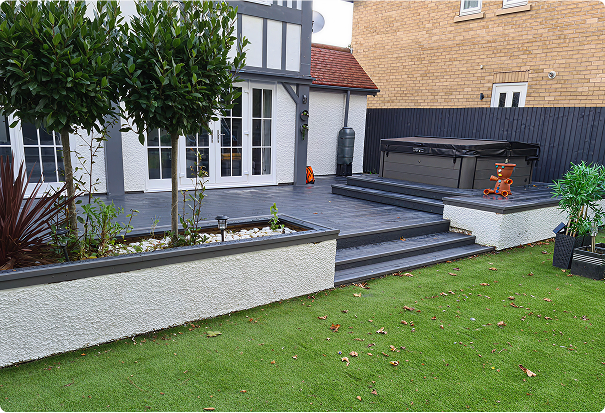
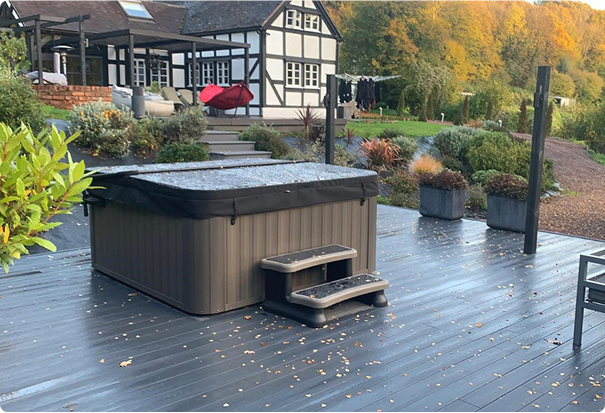
 Previous Article
Previous Article
A UK Homeowner's Guide to Replacing Wood Decking with Composite (2025)

Cost Of Installing Composite Decking